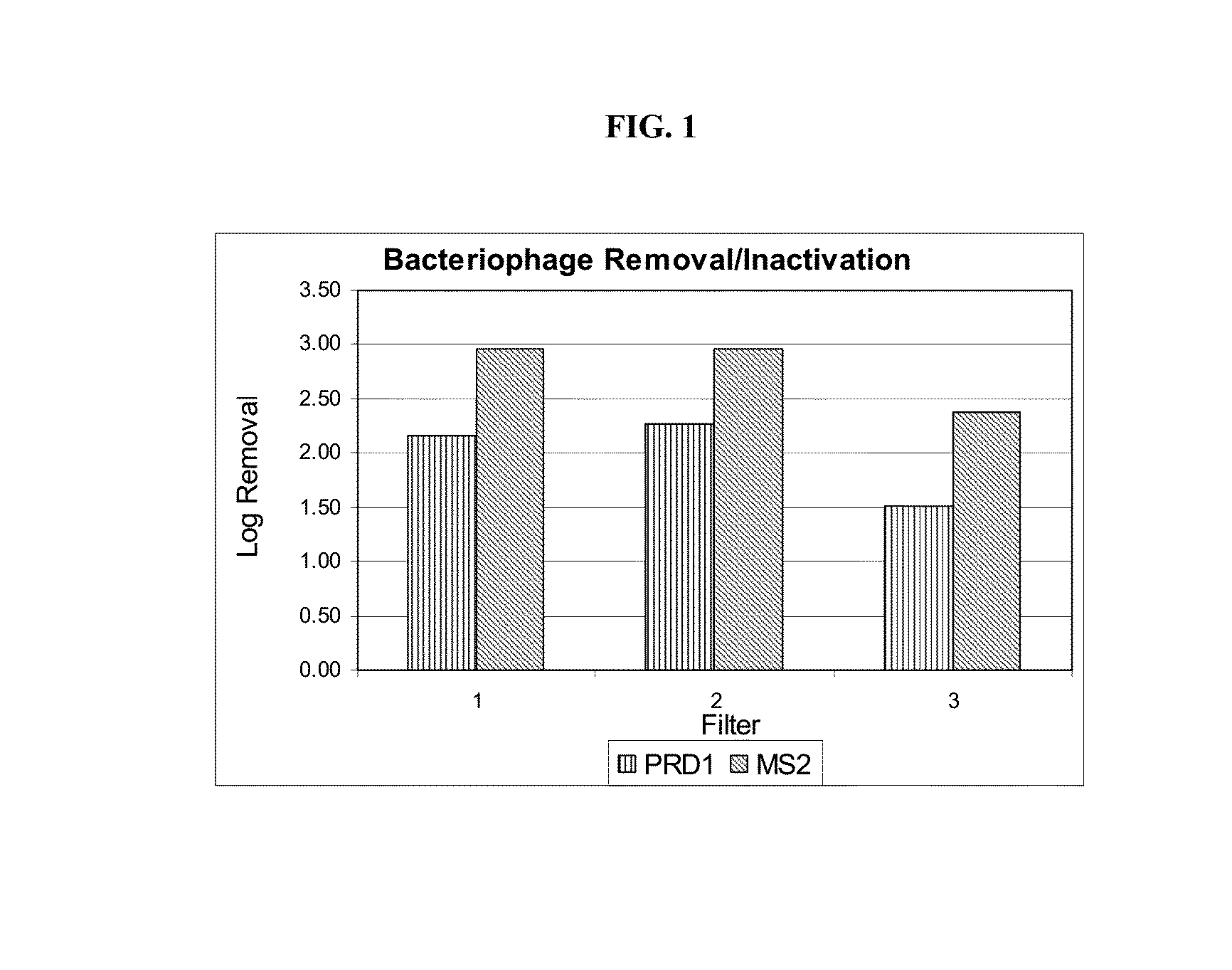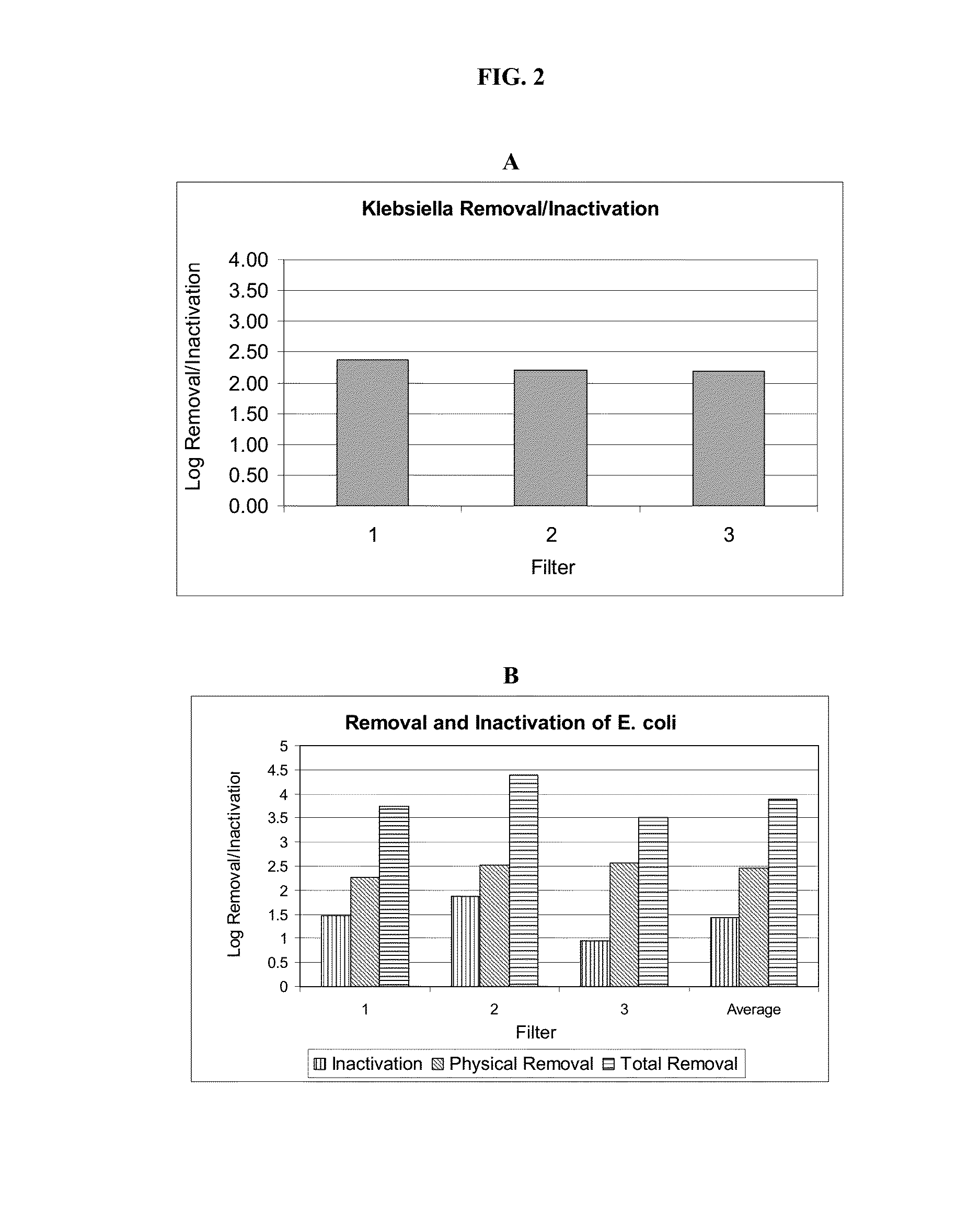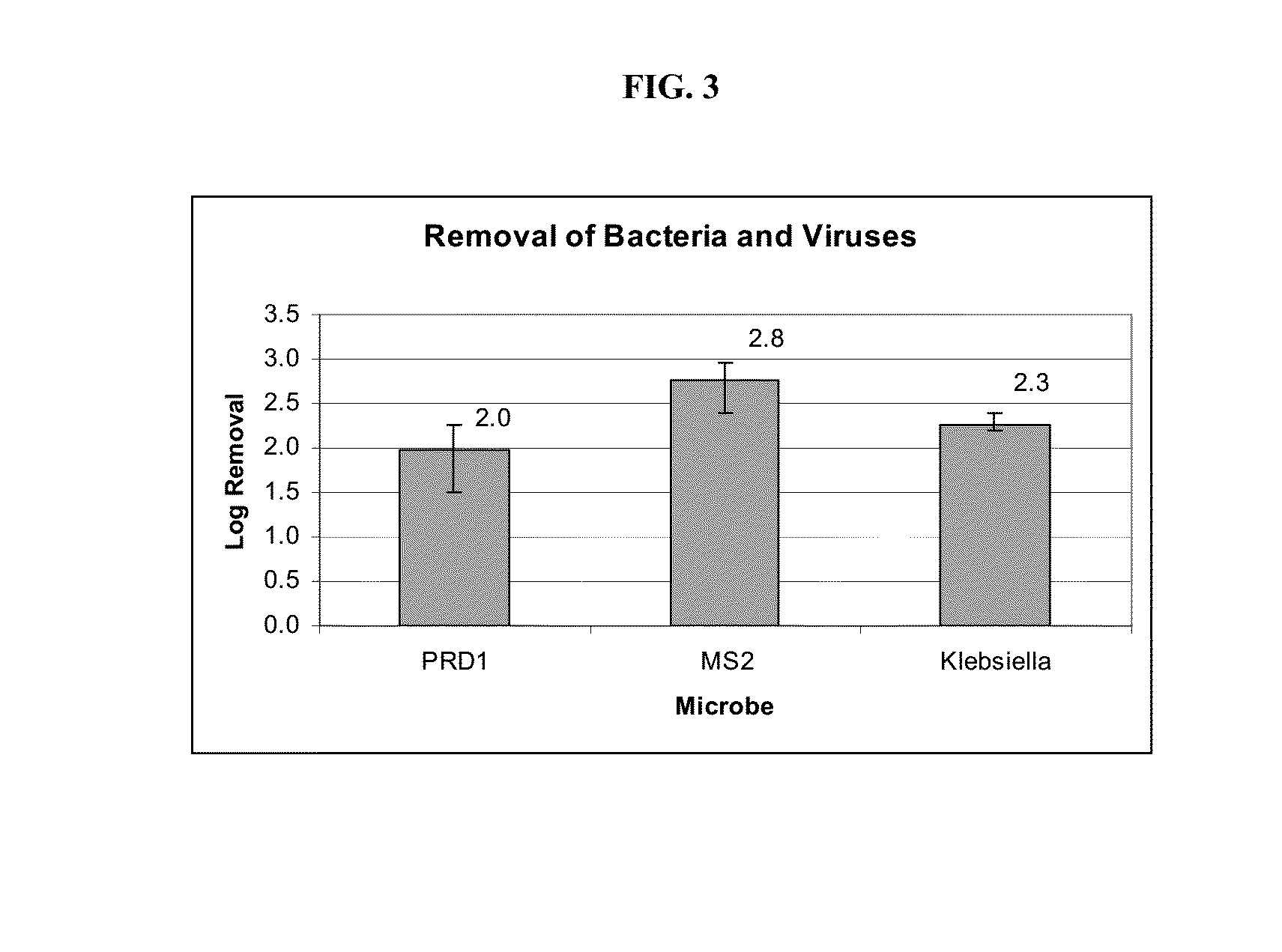Antimicrobial quaternary ammonium organosilane coatings
a technology of ammonium organosilane and quaternary ammonium, which is applied in the direction of animal repellents, specific water treatment objectives, biocide, etc., can solve the problems of not teaching homogeneous aqueous solutions, organosilane, and demonstrating substantiveness and efficacy on skin, and achieve the effect of reducing or eliminating the viable number of microorganisms
- Summary
- Abstract
- Description
- Claims
- Application Information
AI Technical Summary
Benefits of technology
Problems solved by technology
Method used
Image
Examples
example 1
[0130]A solution suitable for application was prepared by adding 4 parts ODTA to 100 parts deionized water with stirring. The resulting clear solution was applied to an open, polyvinyl chloride (PVC) flat-type evaporation pan by atomized spray, insuring that all surfaces were thoroughly wetted. The pan is allowed to air dry for 24 hours to cure the quaternary ammonium organosilane reagents to the container surface to form a quaternary ammonium organosilane coating. Water containing bacteria level previously measured at 107 total bacteria / ml using a BIOSPERSE® Test Kit was added to the pan in a ratio of 4.6 grams of water per square inch of surface area. After 30 minutes the water is sampled using a BIOSPERSE® test kit. After incubation, 105 bacteria / ml was measured. Resampling of the test water at 1 hour and 4 hours gave bacterial counts of 104 and 3, respectively.
example 2
[0131]A 4 oz. solution prepared according to Example 1 was added to a 1 pint tin-plated metal test container having ¾ inch screw top. The solution was agitated to completely wet the inside surface of the container for 1 minute and then decanted. The test container was allowed to air dry for one hour. Residual vapors were removed by an air purge for 5 minutes and the container was then heated to 105° C. for one hour to cure the quaternary ammonium organosilane reagents to the container surface to form a quaternary ammonium organosilane coating. Water (300 g) having a high bacterial count of 107 bacteria / ml was added to the test container. The test container was allowed to stand one hour at room temperature. After two hours, the test water bacterial level was measured at 103 bacteria / ml using a BIOSPERSE® test kit.
example 3
[0132]Two ounce containers of glass, high density polyethylene (HDPE), polypropylene (PP) or polyvinyl chloride (PVC) were treated with an aqueous solution containing 1.5% TDTA. The containers were heated to 100° C. for one hour to cure the quaternary ammonium organosilane reagent to the container surfaces to form a quaternary ammonium organosilane coating. Each container was then rinsed with one oz. of deionized water. One ounce of water containing 105 bacteria / ml was added to each containers and capped. After 24 hours at room temperature, each container was sampled and bacteria measured with a BIOSPERSE® test kit. All containers indicated bacteria counts of 103 bacteria / ml following incubation for 24 hours.
PUM
| Property | Measurement | Unit |
|---|---|---|
| length | aaaaa | aaaaa |
| length | aaaaa | aaaaa |
| flow rate | aaaaa | aaaaa |
Abstract
Description
Claims
Application Information
 Login to View More
Login to View More - Generate Ideas
- Intellectual Property
- Life Sciences
- Materials
- Tech Scout
- Unparalleled Data Quality
- Higher Quality Content
- 60% Fewer Hallucinations
Browse by: Latest US Patents, China's latest patents, Technical Efficacy Thesaurus, Application Domain, Technology Topic, Popular Technical Reports.
© 2025 PatSnap. All rights reserved.Legal|Privacy policy|Modern Slavery Act Transparency Statement|Sitemap|About US| Contact US: help@patsnap.com



